Wu-York
From the ferry docks of Staten Island to the fire escapes of the Lower East Side, this map traces the legendary rise of the Wu-Tang Clan across NYC. Explore the landmarks where bars were born, albums recorded, videos shot, and legacies stamped into street signs. Step through Shaolin’s real-world chambers—from Ghostface’s coffee shop to RZA’s old apartment. Whether you’re a lifelong fan or just stepping into the 36 Chambers, this is your guide to the places that forged the most iconic crew in hip-hop.
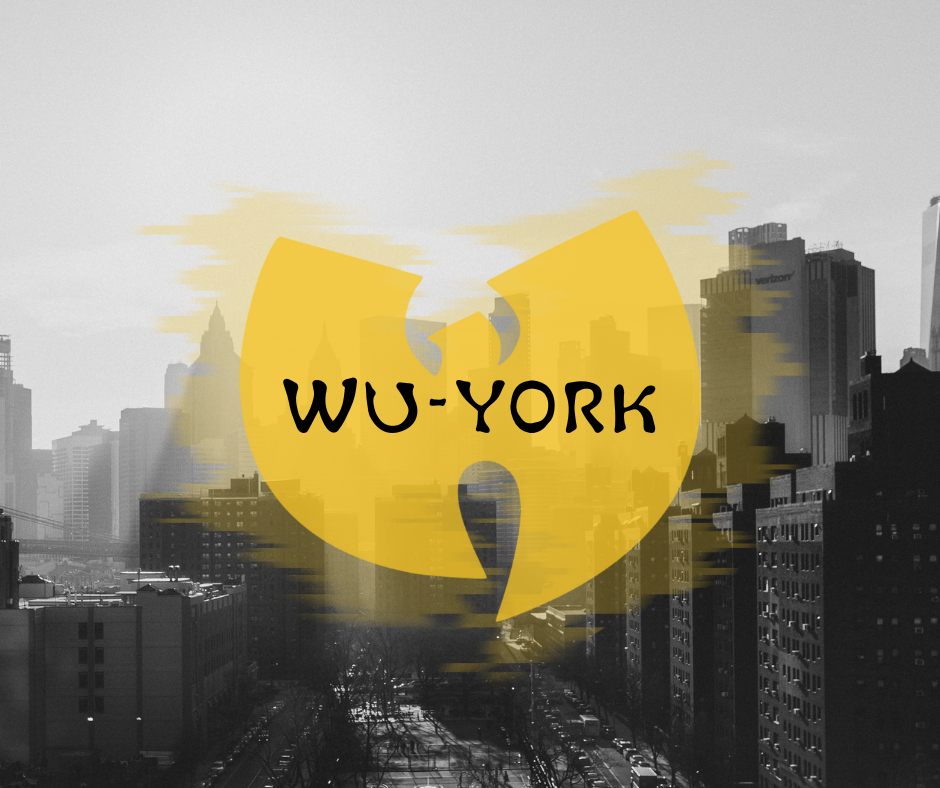
SHOWTIME
MSG
Wu-Tang Clan took the underground to the big stage—MSG is where legends arrive. From street cipher to spotlight, Wu-Tang brings Shaolin to center stage. Get ready for the show with Official Wu-Tang Clan gear:
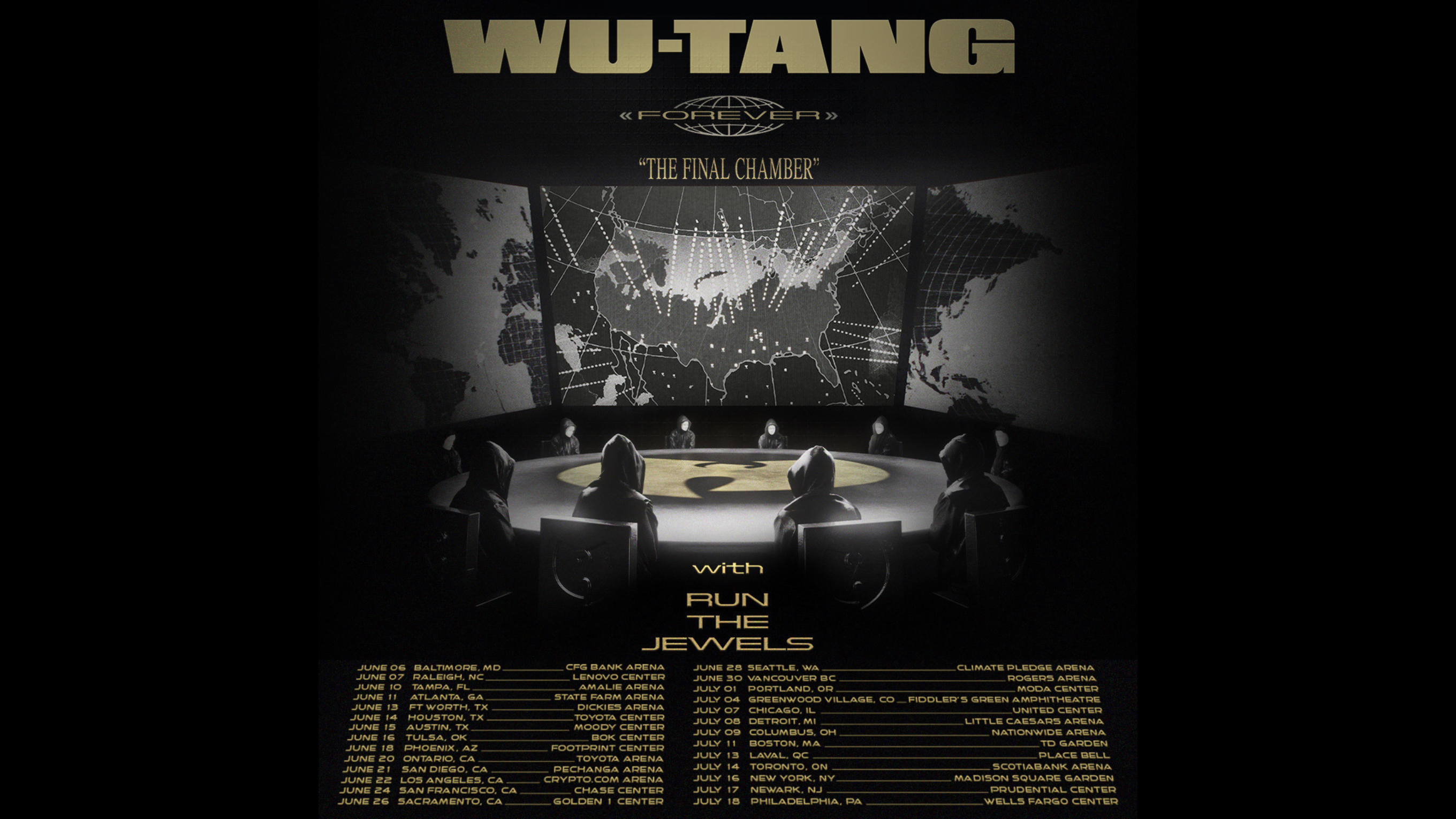
Rough Trade Above
Limited quantity of the Official Store exclusive shirt available at the legendary record store. Get yours before they're gone.
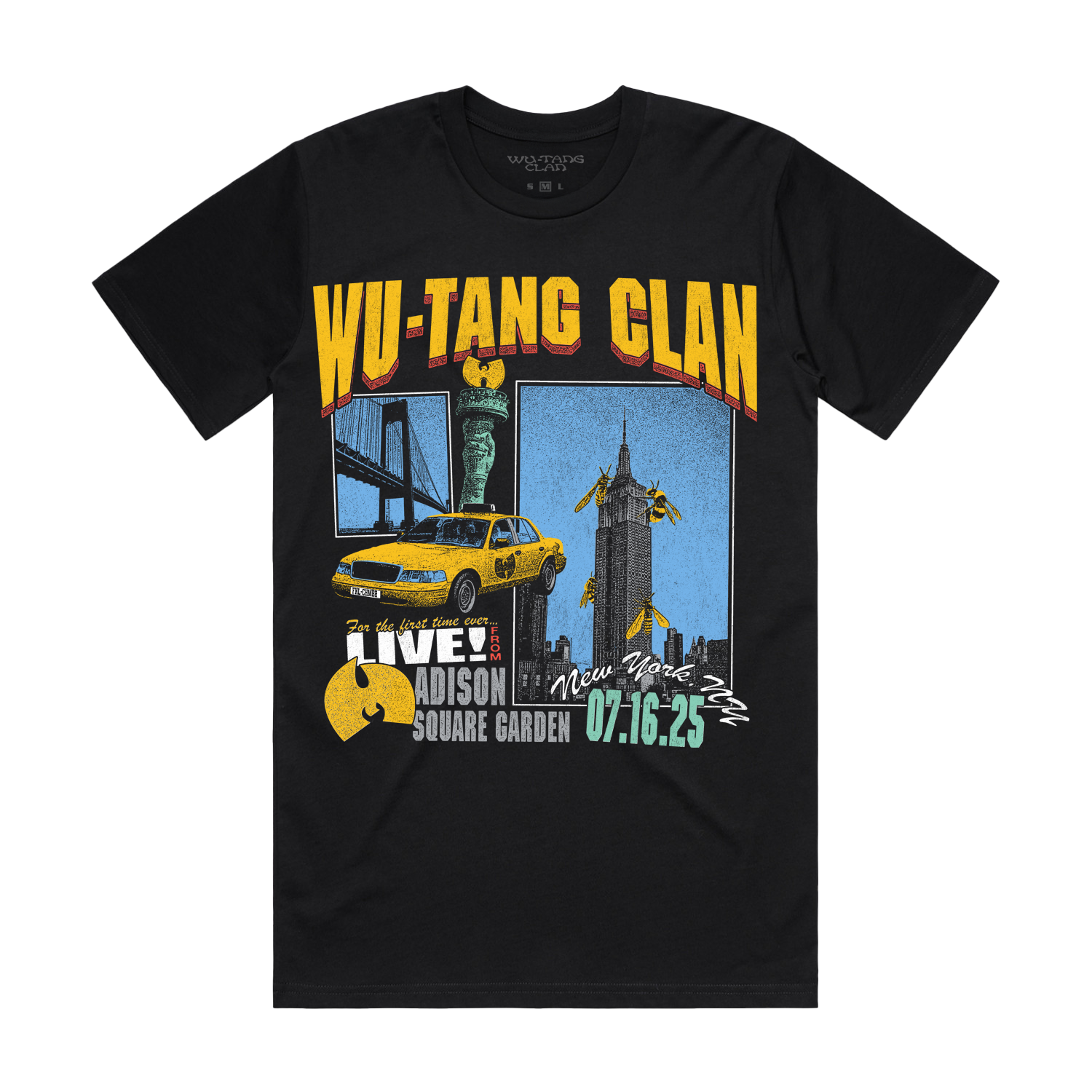
Official NYC Pop-Up Store
The Final Chamber World Tour Official Pop-Up featuring exclusive items, in-store signings and more. 7/15 12 PM - 8 PM 7/16 12 PM - 8 PM
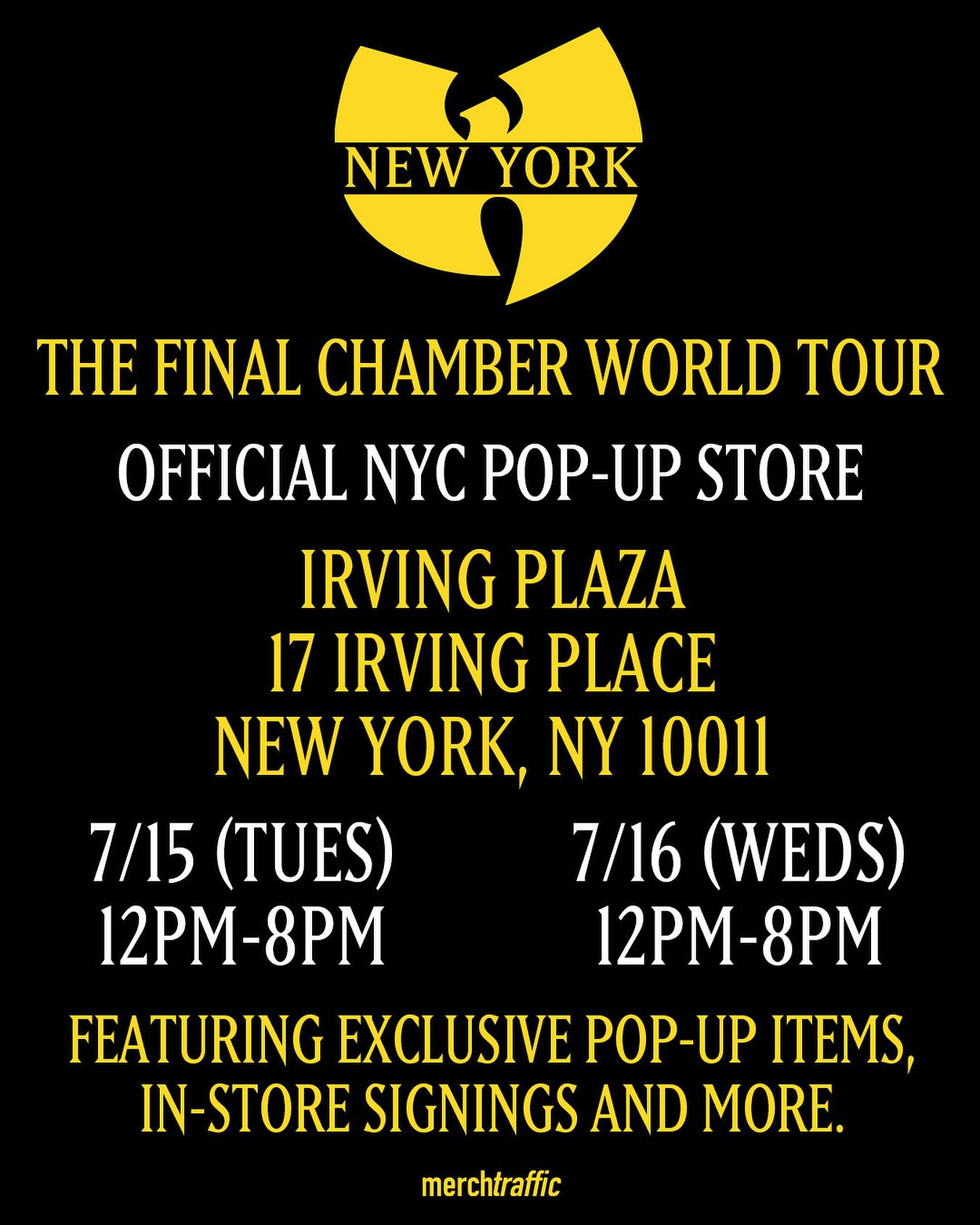
A Weekend in New York
Whitehall Terminal
This legendary hub—where Staten Island meets Manhattan—played a silent role in the rise of the Clan. Every ferry ride from Whitehall Terminal carried the future legends, crossing waters that connected their Staten Island roots with the heart of New York’s downtown grind. A gateway to Wu-ang's world, and passage to Shaolin.
Killah Koffee
Quick tip: grab a cup and fuel your Wu-Tang tour the Shaolin way from Ghostface Killah's koffee shop! Bold roast. No filler. Just like the rhymes.
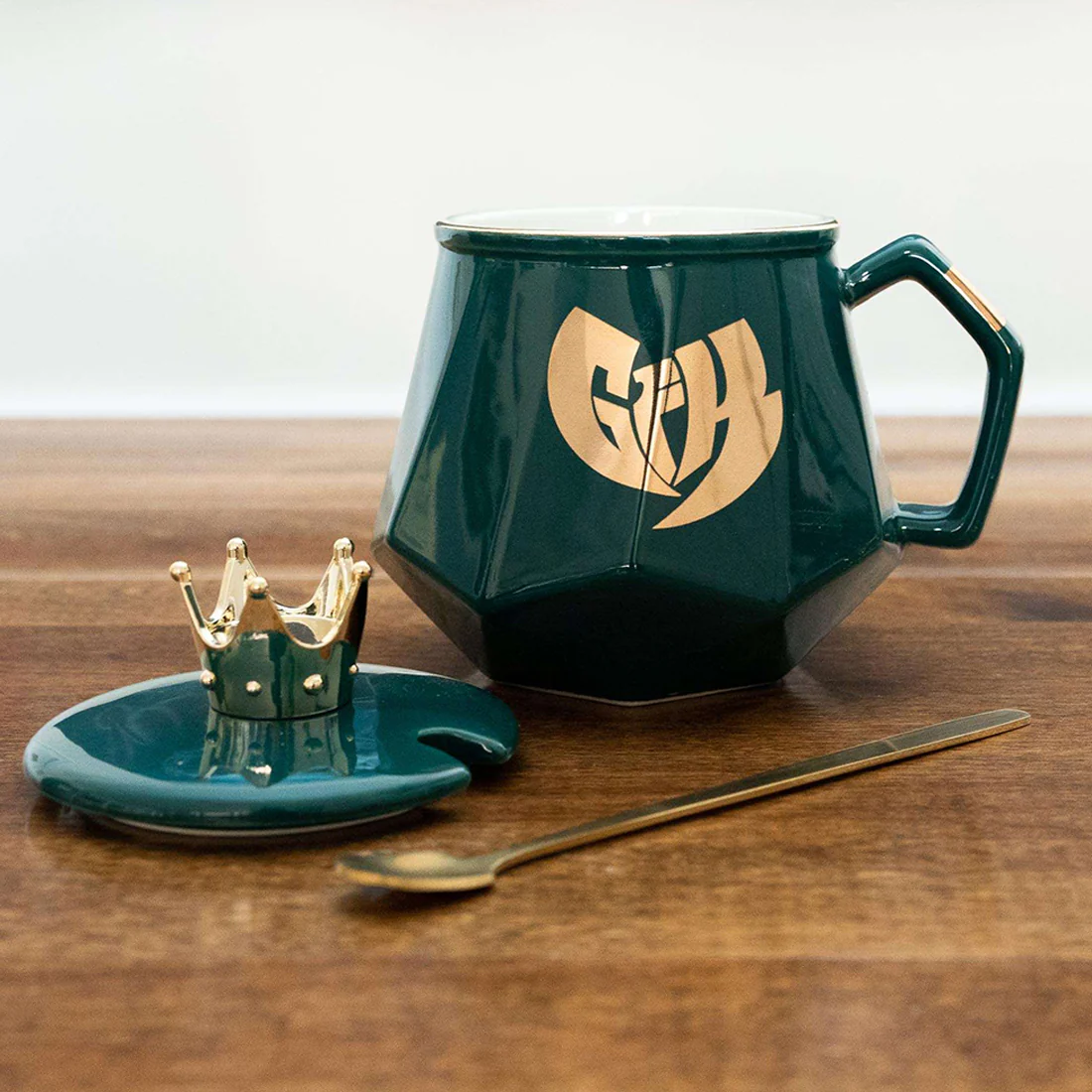
134 Morningstar Road
This is where it began—RZA’s apartment, the Clan’s nucleus. Beats were born here. Plans were plotted. Wu-Tang didn’t start in a boardroom; it started in this room.
Majors Records & Video
A throwback to analog days and corner shop digs. This spot doubled as a filming location for the *Wu-Tang: An American Saga* series, capturing the real-life energy of the grind before greatness.
Park Hill
The heartbeat of Staten Island’s Wu legacy. Ghostface, Raekwon, and more grew from this concrete soil. Park Hill isn’t just a neighborhood—it’s Wu-Tang Clan DNA. Check out the clothing line the bears the name of their origins:
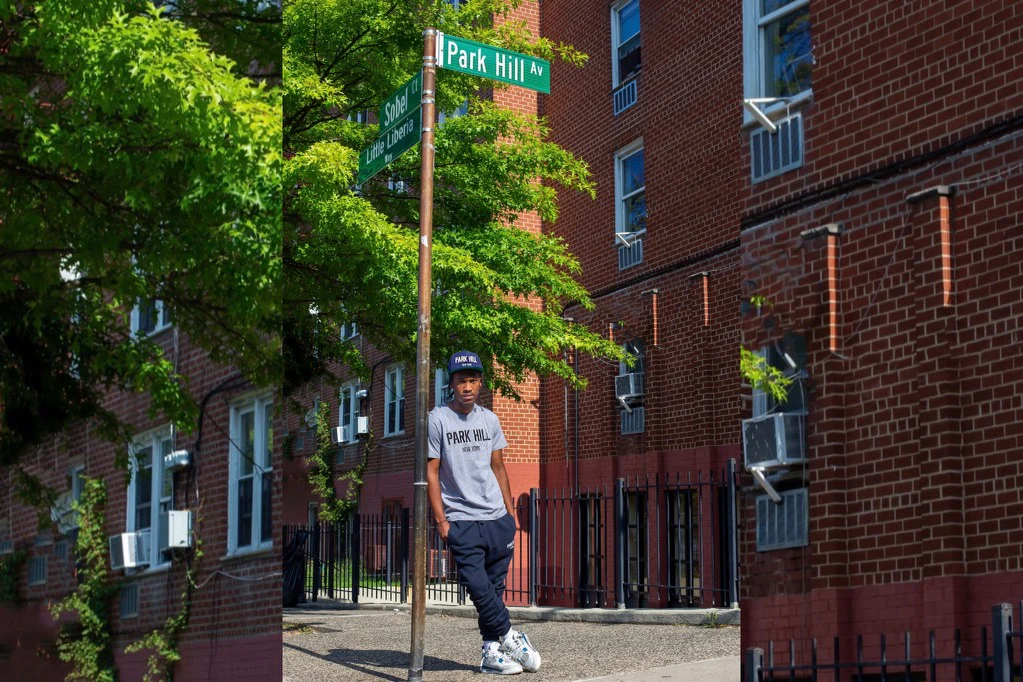
Wu-tang Clan District
This isn’t just a street—it’s a statement. In 2019, Staten Island made it official: a whole district named after the Wu. Right on the corner of Targee Street and Vanderbilt Avenue, the Wu-Tang Clan District cements what fans already knew—Shaolin runs deep.
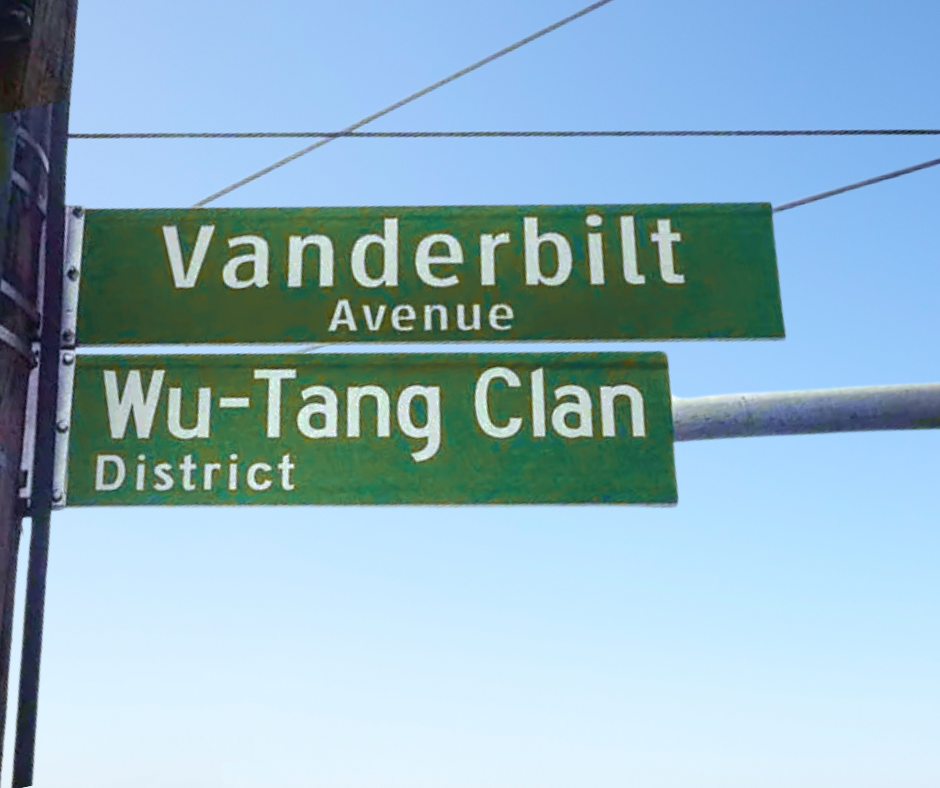
Wu-Tang Clan Mural
In the heart of Staten Island’s Stapleton neighborhood, the Wu-Tang Clan Mural stands tall. This vibrant tribute is more than street art—it's a monument to legacy, loyalty, and lyrical warfare. A must-stop pilgrimage for any real fan.
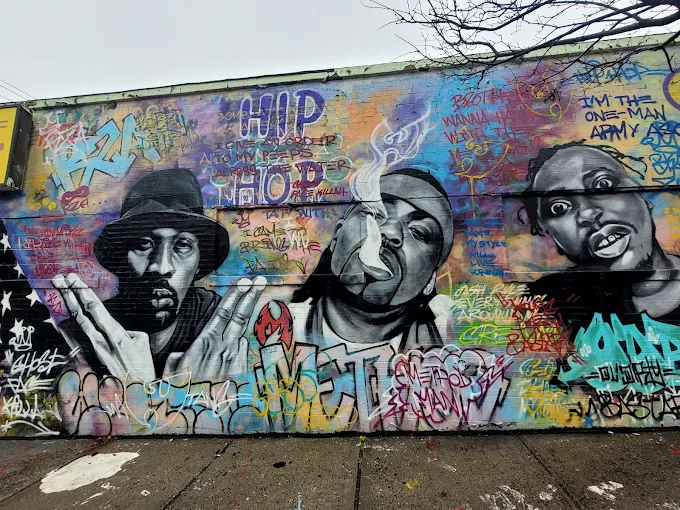
Shaw-nae’s House
Every crew needs fuel, and Shaw-nae’s keeps it real. Plates full of flavor, heart, and neighborhood love. A true Staten Island institution where the vibe’s always family.
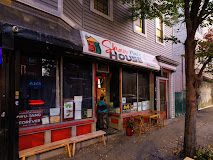
St. George Terminal Staten Island
This is where the ferry drops you into the Wu. Steps from Shaolin soil, St. George Terminal is the portal that carried Wu-Tang Clan from Staten Island to Manhattan, day in, day out. Here's some msic for your journey back.
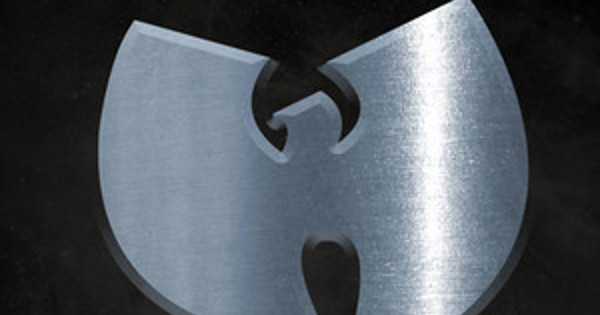
Statue of Liberty National Monument
Before the Clan shook the world, Method Man and U-God were holding it down right here. Back in the early days, both worked at the Statue of Liberty—Meth doing maintenance, U-God on the grind too. From sweeping floors to spitting bars, these Shaolin soldiers went from custodians of the culture to kings of it. Proof that even hip-hop legends start somewhere humble.
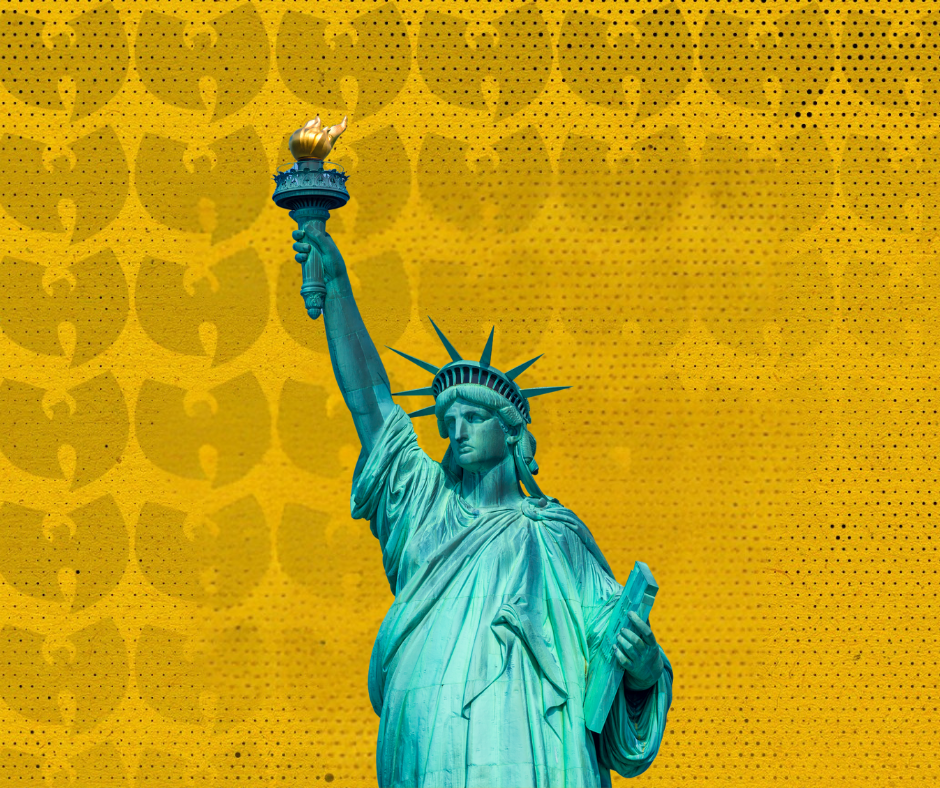
Chinatown
For RZA, Chinatown was more than a destination—it was inspiration. Kung fu flicks, cultural grit, and a vibe that helped shape the Wu aesthetic. Here's some music for your journey through:
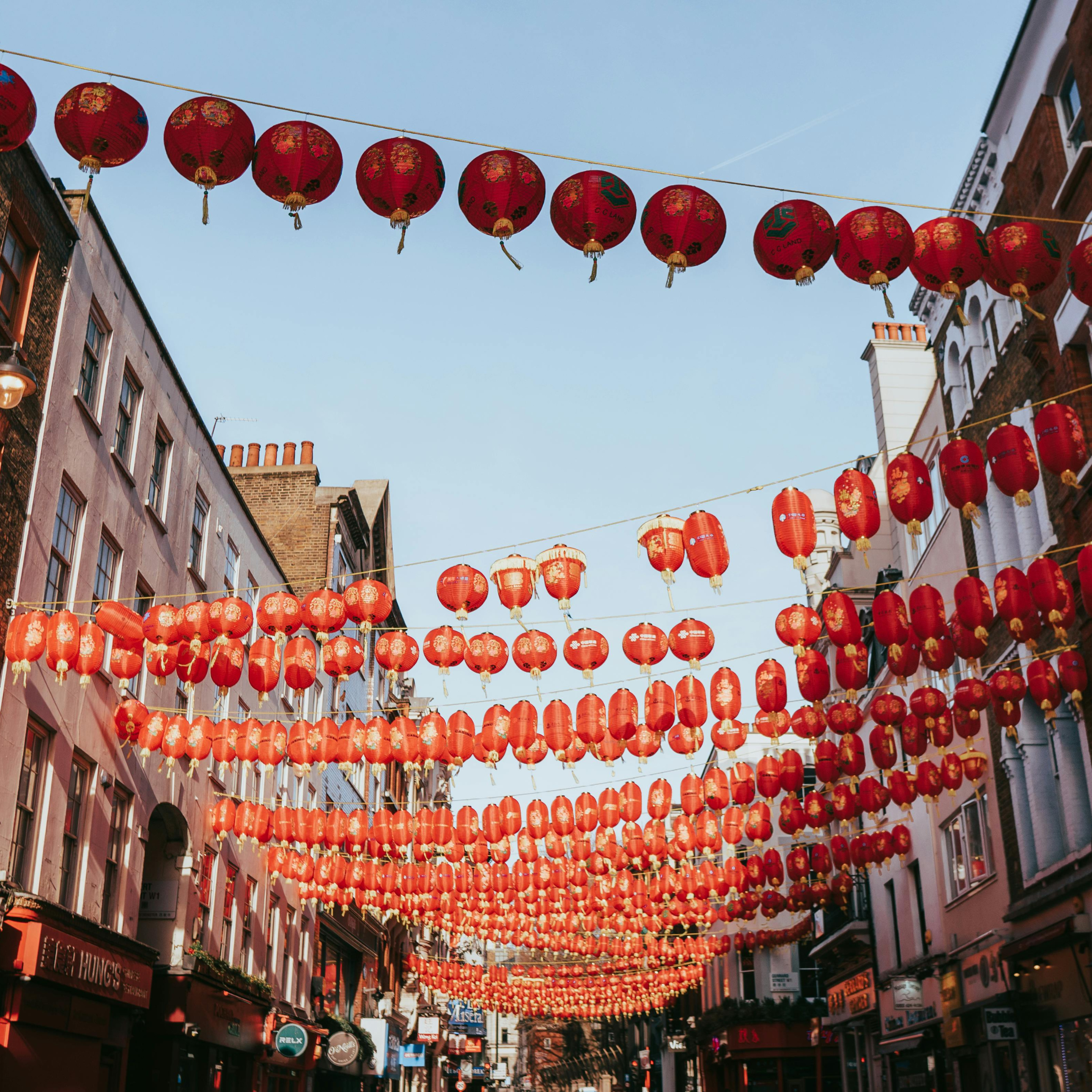
Lower East Side
Filming location of “Protect Ya Neck” and more. Concrete jungle, grainy light, and DIY power—Wu-Tang’s early visuals found the perfect match in the LES streets. A raw backdrop for a raw revolution.
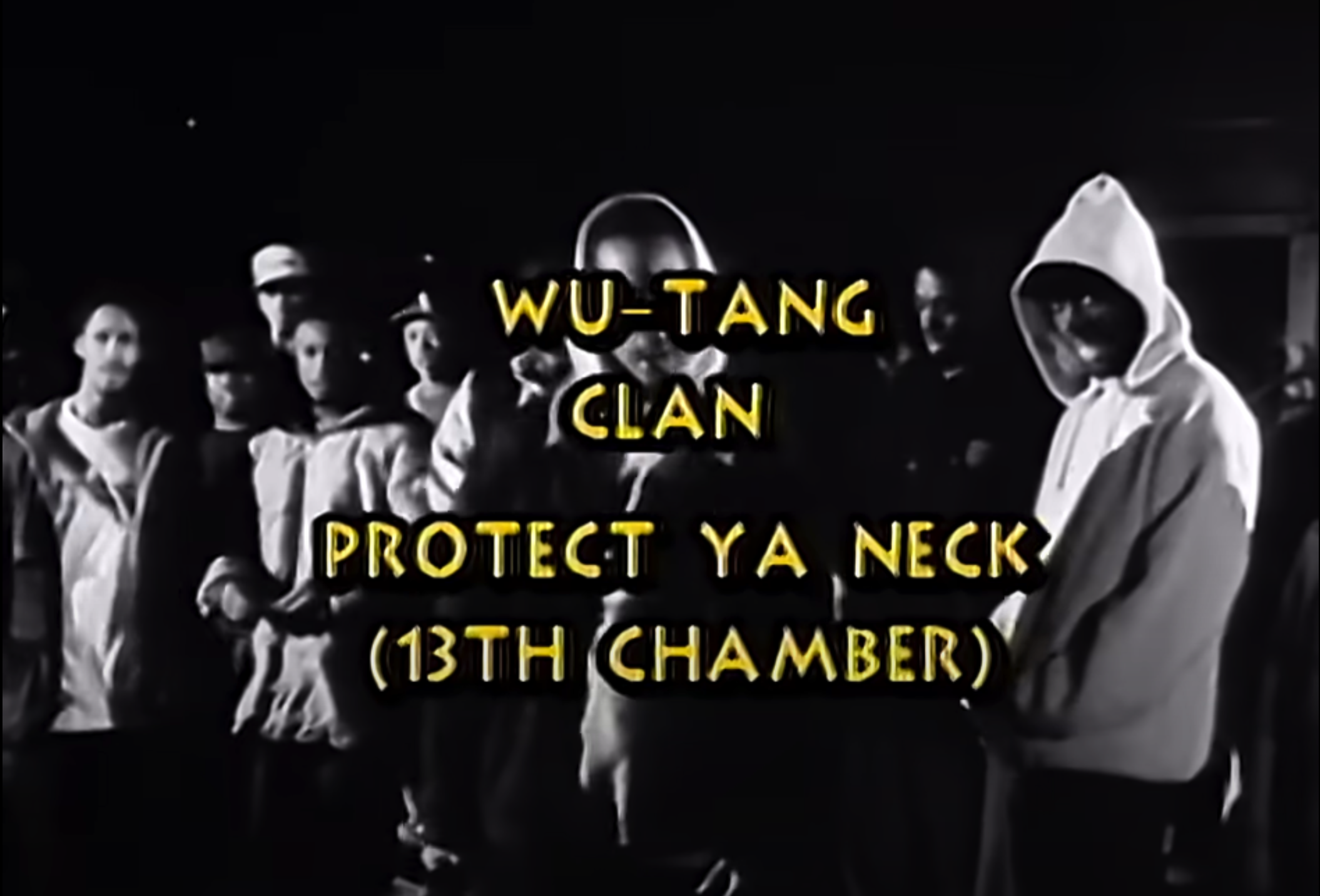
Angel Orensanz
This Gothic‑spired former synagogue—in 1993 owned by Spanish sculptor‑turned‑art‑space impresario Angel Orensanz—is where a raw legend was born. Photographer Daniel Hastings and the Clan rolled through: only about six members made the Staten Island ferry (Meth, U‑God, Masta Killa missed out), so Hastings had a brainstorm—hoodies, stocking masks, golden Wu logo carved from foam core—transforming the space into an urban monastery of mystery and menace. The result: one of hip-hop’s most enduring front covers, created in a place where art, architecture, and rebellion collide. Listen to the album here:
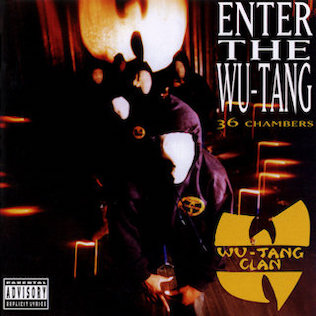
Hot 97 - Hip Hop & R&B News
Hot 97 was one of the first to spin the Clan. From Staten Island streets to NYC airwaves, Wu-Tang’s signal spread through these frequencies like smoke from a sword fight.
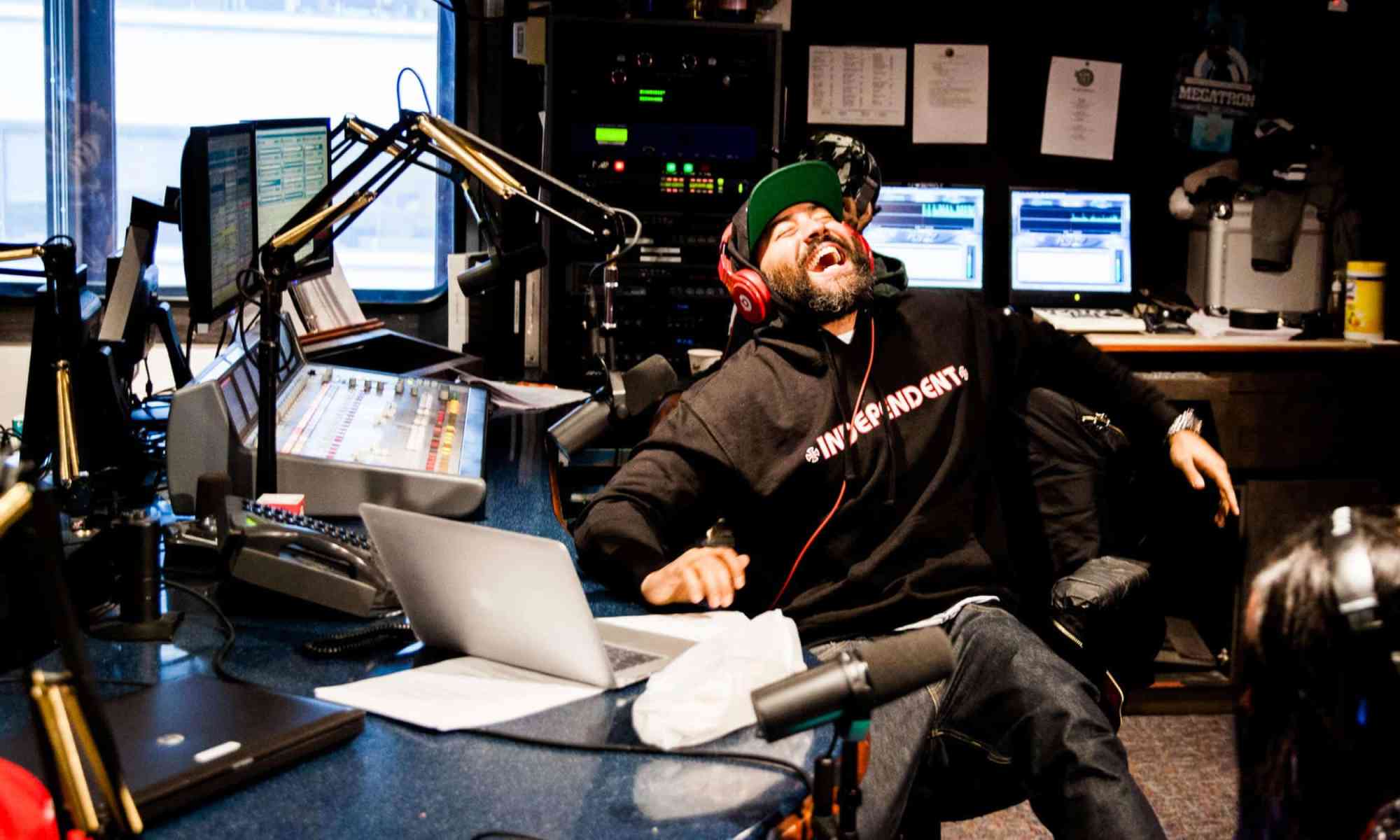
1520 Sedgwick Avenue
The building where DJ Kool Herc sparked a global movement. Without this address, there’d be no Clan, no bars, no culture as we know it.
Empire State Building
From the slums of Shaolin to the top of the Empire State—this is the climb. No mic needed at the top, just vision. Wu-Tang made NYC history loud enough to echo from here.
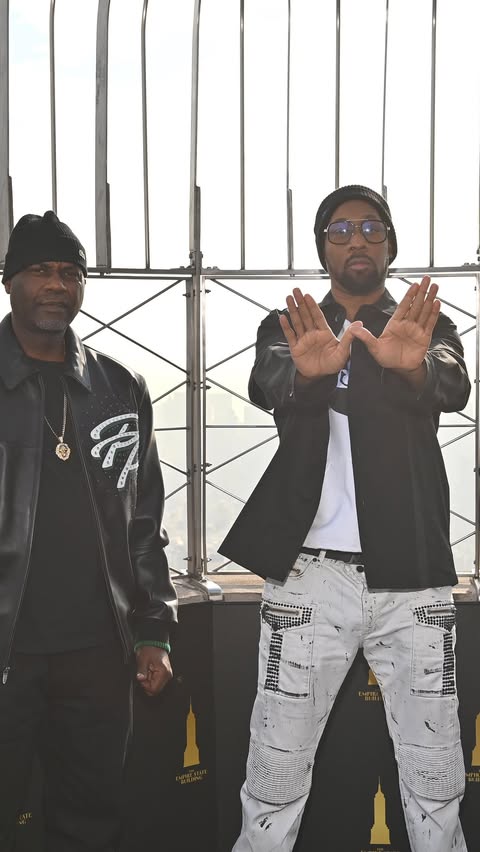
MORE TO EXPLORE
42nd Street
Before RZA crafted beats, he was watching flying fists and Shaolin monks. 42nd Street grindhouse theaters were his dojo, where kung fu flicks inspired the Clan’s philosophy and style.
Brooklyn Zoo
Immortalized by Ol’ Dirty Bastard’s breakout solo track, the Brooklyn Zoo became symbolic of his untamed energy and raw brilliance. Though the actual zoo had nothing to do with the song, ODB turned it into a metaphor for survival, madness, and creative chaos.

Firehouse Studios
Deep in Greenpoint, Brooklyn, this converted firehouse lit the spark. It's where the Clan recorded *Enter the Wu-Tang (36 Chambers)*—raw, cold, and one-take real. You can still feel the steam rising from the boards.